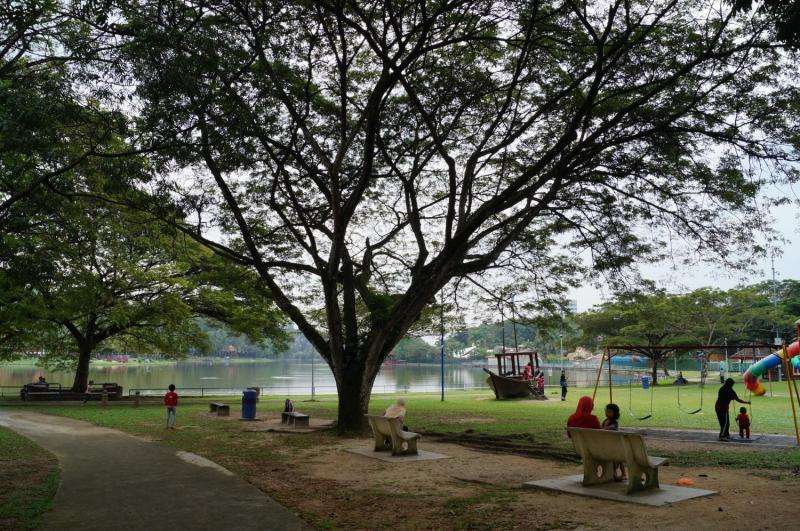Computer models show park microclimates improve city life

Computer modelling based on microclimate data from a Malaysian public park has shown how adding trees and grass can improve living conditions in dense city cores.
Most people appreciate urban parks for their aesthetic and social worth. In hot climates, the right mix of ground cover, plant and tree foliage can noticeably improve local microclimates to make inner cities more liveable, say researchers at the Universiti Teknologi MARA in Malaysia.
They placed portable weather stations in and around a lakeside park near the university to document the microclimate among its dense, mature plants. They then used the collected data to create computer models that demonstrate the effects of adding more trees and replacing all plants with ground cover.
The results of a simulated park with denser trees showed, unsurprisingly, that the park's shady canopy harboured lower temperatures, slightly higher humidity and more airflow when compared with a simulated park with only ground cover. Using data modelling, the researchers were able to add about 80 percent more shade cover to the model to gain a significant increase in human comfort. They suggest further research should be done to gain a better understanding of the sizes and varieties of trees best suited to improve local conditions.
"The results showed that the density of the mature trees played an important role," say the researchers. They note that adding more, taller trees to the baseline model of the park yielded reduced temperatures and improved airflow, which the plants channelled through the park to create a more comfortable climate for humans.
Improved conditions were also elicited by increasing the ground cover vegetation, by planting cow grass, for example, and by increasing the numbers of mature trees such as the rain tree (Samanea saman), angsana (Pterocarpus indicus) and the yellow flame tree (Peltophorum pterocarpum).
The researchers say that, in addition to adding cooling shade to an area, trees shelter local wildlife, can help mitigate pollution, and can also reduce the energy needed to control climates within nearby buildings. While they couldn't extend their data set to model the entire urban area, they say developing such a model would be worthwhile, since adding treed parks can reduce the "urban heat island effect", which traps warm air and contributes to heat stress among inner city dwellers.
In the future, the researchers plan to propose an outdoor thermal comfort model that reflects the adaptive responses of humans to heat stress.
Provided by Universiti Teknologi MARA (UiTM)



















